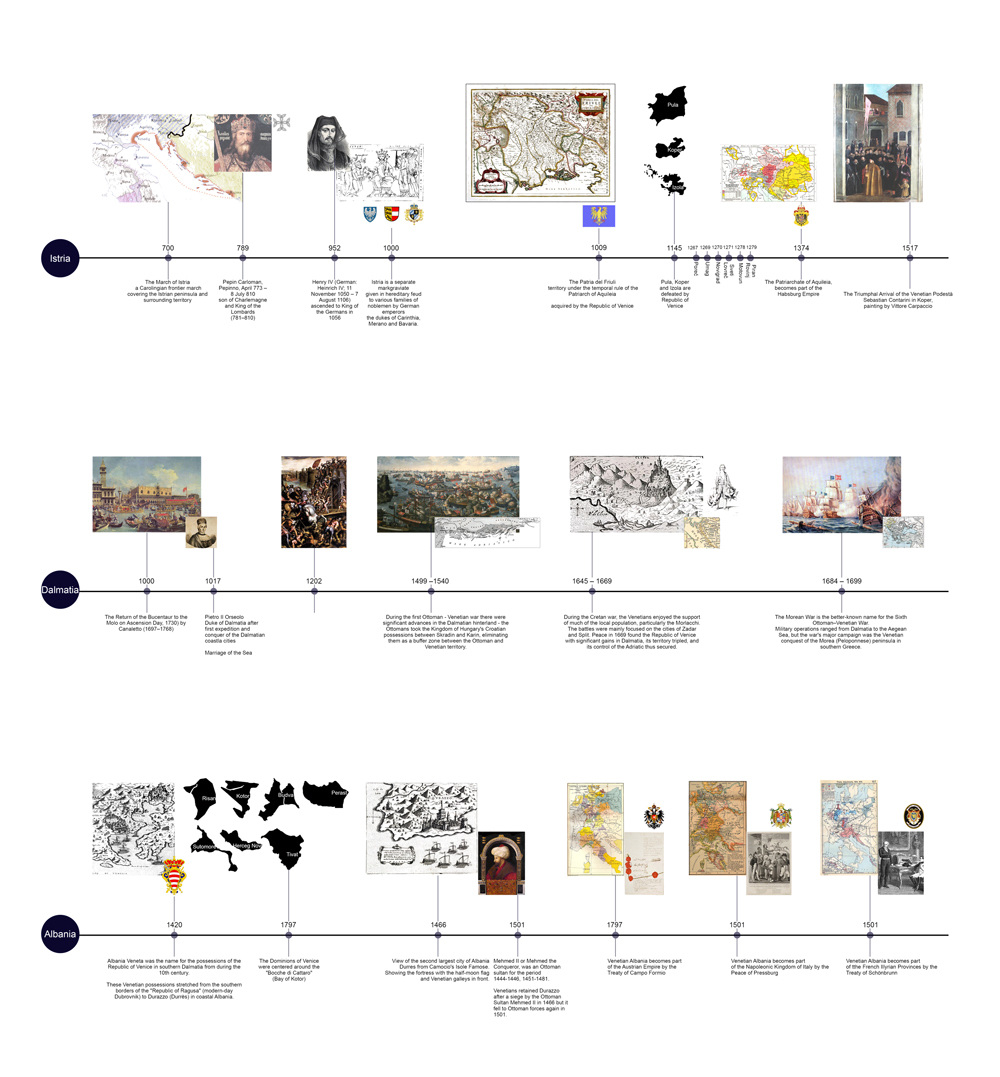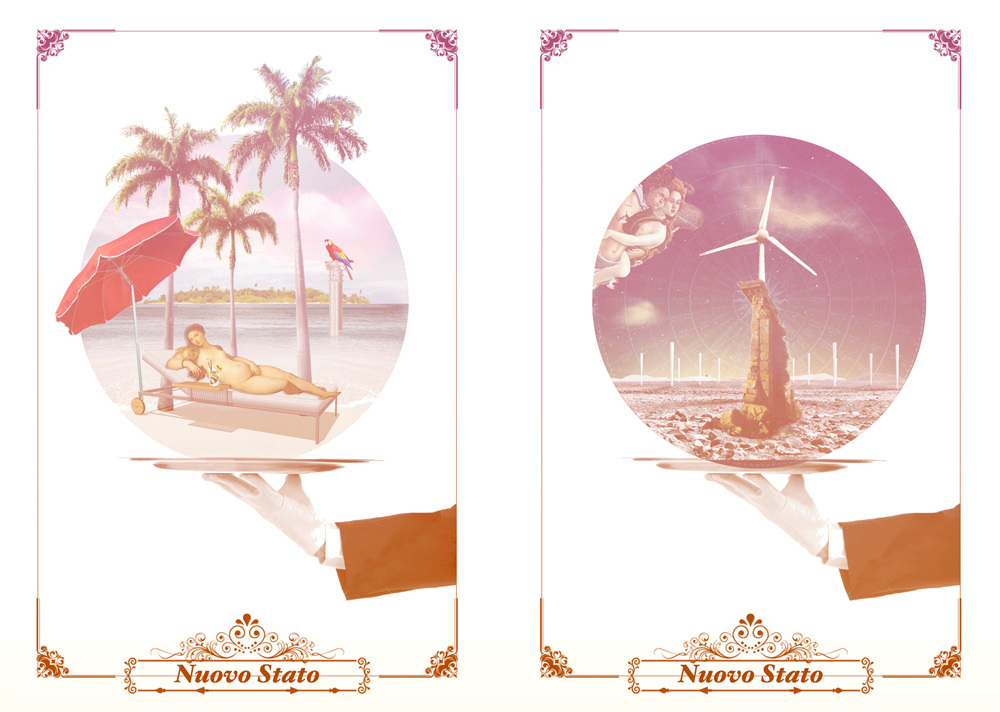–––
Savvas Kakalis, Alexandros Tzoutsas
The territory of the Adriatic sea is a body of water separating the Italian Peninsula from the Balkan peninsula and has a an average width around 85 nautical miles. It's coastline covers 3.739 km and is delimited by the countries of Italy, Slovenia, Croatia, Bosnia & Herzegovina, Montenegro and Albania. During the Cretaceous Period, 70 million years ago the Adriatic basin reached the Dinaric Alps forcing its creation along with a series of intricate geomorphological features. Because it is a semi-enclosed sea with a continuous change of currents it's salinity is lower than the Mediterranean's and so it collects a third of the fresh water flowing into it, acting as a dilution basin. In the period between 789-1797, the Republic of Venice established its domain and created an overseas empire which included Dalmatia & Istria as well as other acquisitions. Interpreting the area as a field of constantly changing relations and commerce , the research focuses on the various programs and trends that are realized in the area today as opposed to the Venetian maritime period.










Nuovo Stato
The mercantilism of the Venice empire was the first form of global economical and commercial ruling through a system of connected domains. In today's world, globalized trade integrates more and more countries by abolishing traditional production and product exchange structures, redistributing new frontiers and regulations (Transatlantic Trade and Investment Partnership -TTIP). At the same time, tourism development as the main economic pillar of the Dalmatia and Istria countries is growing rapidly, resulting in the environmental degradation of the coastline. The project explores a paradoxical condition, an ambiguous status that is situated between tourism and modern manufacture trends, past and future time. The Nuovo Stato, acts as an alliance of economic growth between the countries that is rooted in an imaginary or artificial island which hosts a speculative collection of re-imagined architectural and landscape elements. Through its allegorical storyline this new offshore non-place incorporates clashing programs by suggesting a surreal tourist experience. In the final moment, by arriving at this island you should ask yourself: is this a place of heavy industrial and commercial use or a celebratory condition of bliss?











©COASTAL DOMAINS 2016-2017